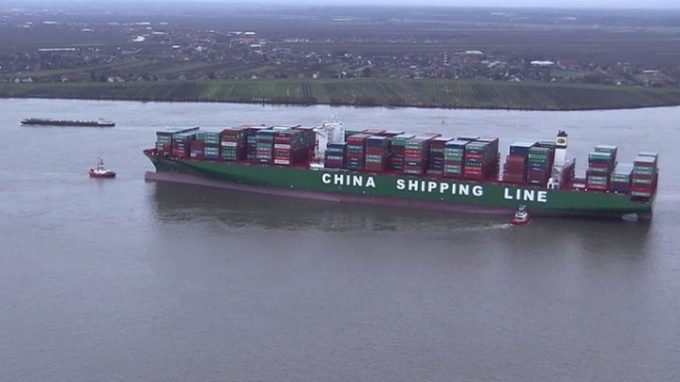LA/LB and Tanjung Pelepas celebrate as 2024 port 'winners and losers' revealed
**EDITED AT 14:00 BST 02/04/25 TO INCLUDE QUOTE FROM ANTWERP-BRUGES** Last year’s port throughput “winners and ...
WTC: RIDE THE WAVEFDX: TOP EXEC OUTPEP: TOP PERFORMER KO: STEADY YIELD AND KEY APPOINTMENTAAPL: SUPPLIER IPOCHRW: SLIGHTLY DOWNBEAT BUT UPSIDE REMAINSDHL: TOP PRIORITIESDHL: SPECULATIVE OCEAN TRADEDHL: CFO REMARKSPLD: BEATING ESTIMATESPLD: TRADING UPDATEBA: TRUMP TRADE
WTC: RIDE THE WAVEFDX: TOP EXEC OUTPEP: TOP PERFORMER KO: STEADY YIELD AND KEY APPOINTMENTAAPL: SUPPLIER IPOCHRW: SLIGHTLY DOWNBEAT BUT UPSIDE REMAINSDHL: TOP PRIORITIESDHL: SPECULATIVE OCEAN TRADEDHL: CFO REMARKSPLD: BEATING ESTIMATESPLD: TRADING UPDATEBA: TRUMP TRADE

An op-ed piece from Splash24/7 on the need for ports to begin drawing up plans for ultra-large container vessels (ULCVs) should they become a casualty. Among the sources in Hamburg that The Loadstar has spoken with, there is a consensus that both the port and China Shipping were lucky the Indian Ocean Elbe grounding incident wasn’t far worse. It was still bad enough, with estimates that it cost the Chinese carrier $20m, with 12 of Rotterdam’s largest tugs brought in to help drag it off the river bed – some of which were hired out at $20,000 an hour. The stakes get higher as the ships get bigger: “CSCL is one of the most valuable customers of the port of Hamburg. Losing this carrier because of physical limitations of the port would be a severe financial and economical setback for the entire region.”
CMA CGM South Korean staff strike over bonuses after bumper 2024 profit
MSC switches two more Asia-Europe port calls from congested Antwerp
CMA airline returns two freighters, while ANA takeover of NCA looms
Front-loading frenzy has made traditional H2 peak season 'unlikely'
Nightmare for Bangladeshi exporters as congestion and tariffs bite
Tradelanes: Export boom in Indian sub-continent triggers rise in airfreight rates
Carriers introduce surcharges as congestion builds at African ports
Mexican airport modernisation plan unlikely to boost cargo facilities


Comment on this article
Jim Walsh
March 25, 2016 at 4:58 amBigger is better for who? For the cargo owner? Ports? Canals? Consumers? For the environment? With the price of bunkers more than halved mega ships can now bypass the Suez canal, save thousands of dollars on fuel and take a few days longer to reach port. With massive ships come greater risks – fire fighting, salvage, pollution response. How do we respond. Who covers the costs of preparation and response? Sustainable? More feeder ships moving from the hub ports to transship those boxes to end user ports. More emissions per VGM certified container. Ports creating ever larger footprints to benefit who? All stakeholders need to be at the table to ensure sustainable innovation and progress.